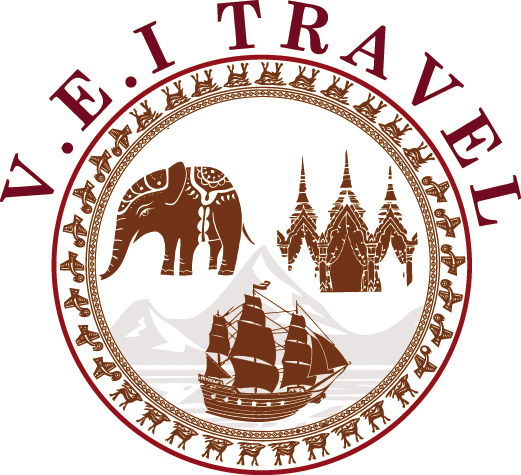Tuesday 27 January 2009 - At 6:30am, a mini bus came to pick me up at my guest house in Lao Bảo town. As I was back in Vietnam via the Lao - Viet border crossing too late the day before, I decided to stay overnight in Lao Bảo border town and next day I would get a bus from Lao Bảo - Khe Sanh - Đông Hà - Đồng Hới, where I would fly back home in Hanoi.
.jpg)
It was the second day of the lunar New Year (Tết) and still early, so we saw only two people on the street in Lao Bảo town. I was the first person in the mini bus, but the driver picked up more people on the way. We passed by Khe Sanh which is a small town, about 20km away from Lao Bảo border gate. This used to be the bloodiest battle field in early 1968 during the American war. At a crossing in the town, there is a memorial statue of the Vietnamese soldiers and the driver said Khe Sanh museum was on that direction. I visited Khe Sanh museum and Tà Kơn airport on DMZ tour in September2000 and it was still one of the most interesting places in Vietnam that I've been to.
Despite going along the pass on National Highway No. 9, our 12 seater mini bus still ran very fast, same as the mini bus I took a few days before. It was a relief for me when I got out of it at Đông Hà town. Honestly, on this trip, I prefer the slow bus ride in southern Laos even though the buses are old. Then I changed into another bus to Đồng Hới city and we went up north along National Highway No. 1. There were 45 people inside a 30 seater bus. The bus was packed with people and I couldn't move my legs for an hour, while sitting at the rear of the bus and holding my own backpack. When the bus came close to Đồng Hới city, I had to stand by the door of the bus. It was a tiring trip as the bus stopped numerous times to pick up more people on the way, but it was fun to chat with the locals who speak Vietnamese with their heavy central accent. Sometimes it's difficult for me to understand them, although we are Vietnamese.
.jpg)
Finally the bus stopped in Đồng Hới city right on National Highway No. 1 and I had to find a hotel. There were no taxis, no motorbike drivers (xe ôm), only closed shops and offices during the lunar New Year holiday. I decided to go straight down the street and saw "Quảng Bình Quan", which is the gate into the citadel in the old days, so I climbed up the building to take photos of the city view. It's located at a crossing and I chose one of the directions, just went straight and I found Đồng Hới hotel, US$10/night, so I decided to stay there. Near the place, there were two restaurants that served noodle soup and rice, so I would be ok until my flight next day.
In the afternoon, I walked around the area and found some interesting sites. During the American war, this city suffered from extensive damage from US bombing as it's located north of the former Demilitarized Zone (DMZ). Along National Highway No. 1 that goes through the city, I saw the ruins of the old citadel, government offices, a site under construction with the US fighter (this place will soon be open as a museum), then I turned right and walked toward Nhật Lệ river.
.jpg)
This is my 2nd visit to Đồng Hới city in Quảng Bình province. On my last trip, I spent time traveling to Phong Nha caves, 45km away from the city, so I didn't know much about the city. Phong Nha caves and Kẻ Bàng national park are a UNESCO world heritage site. Phong Nha caves (over 30 caves and total discovered length of 100km) have the longest underground rivers, the largest caverns and passageways and the most astonishing rock formations in the world.
.jpg)
Đồng Hới airport was newly open a few months ago and now it's easy to fly between Hanoi and Đồng Hới (3 times per week on ATR72). There will soon be flights between Đồng Hới and Sài Gòn on Vietnam Airlines.
 Francais
Francais  Vietnamese
Vietnamese